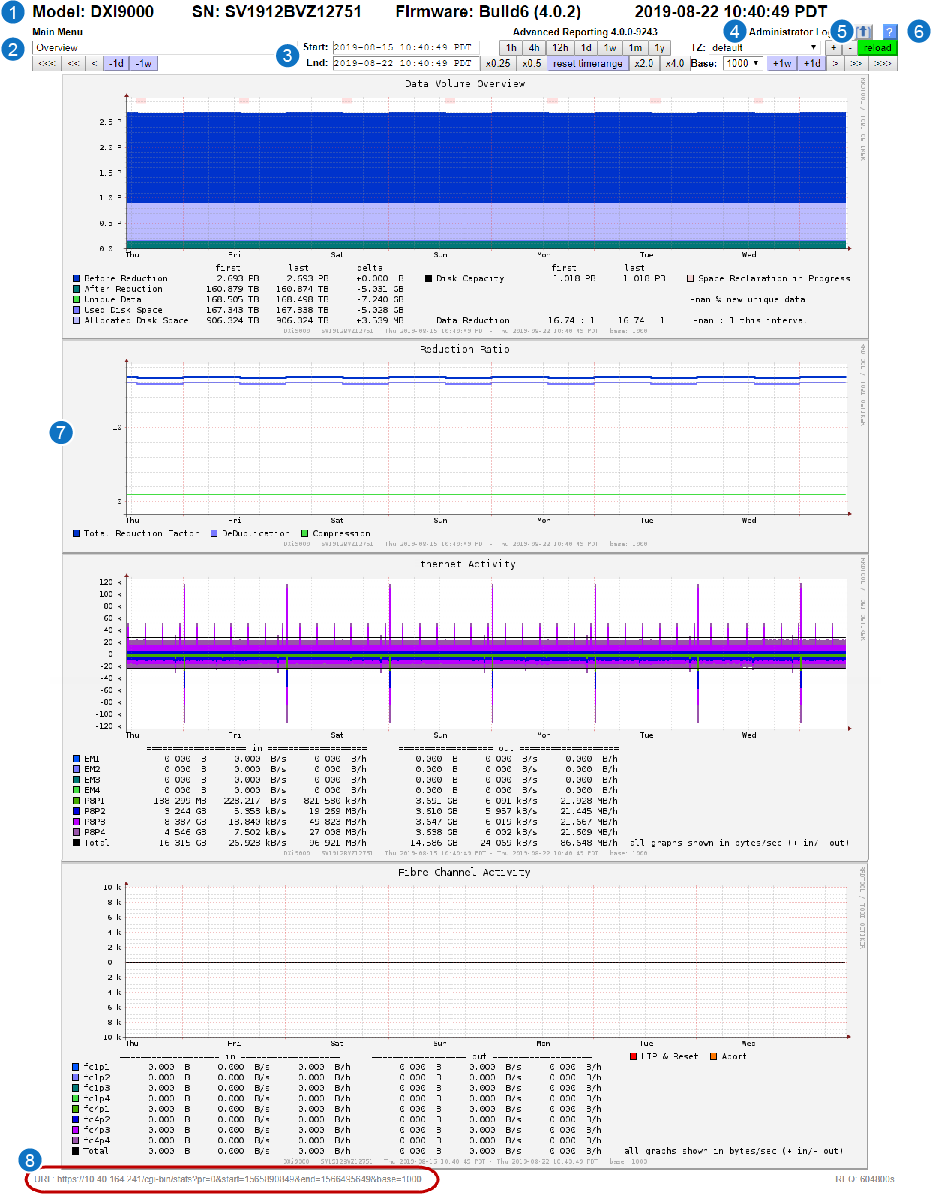About Quantum Advanced Reporting
Quantum Advanced Reporting combines comprehensive performance data logging with powerful visual reporting and analysis tools, which you can use both to identify potential problems with your
Figure 1: Quantum Advanced Reporting Virtual Console – Overview Report
|
1 – System Information |
4 – Log On/Log Out Link |
7 – Report Graphs |
|
2 – Main Menu - Report Selection |
5 – Database Export |
8 – URL Reference |
|
3 – Time Range and Time Zone |
6 – Advanced Reporting Online Help |
|
Advanced Reporting is an extension to your
By seeing how various operations affect performance, you can use Advanced Reporting to optimize your network ecosystem and business procedures for backup, recovery, and replication.
Advanced Reporting runs on the
Use the reports in Advanced Reporting to access applicable performance and system statistics, such as the following:
- Capacity utilization
- Ethernet and Fibre Channel activity
- CPU load
- Data deduplication
- Space reclamation activities
- OST backup tasks
- Per Share and Partition (Chargeback) information
You can use the report tools to zoom in or out on a specific time period. All graphs within a report display data for the same time period, allowing you to compare performance data between graphs in the same report or between different reports.
Example
You want to view information about used storage space for the current week. Display the Capacity report and zoom into the current week. Compare how storage has been allocated for the current week using the report's graphs.
Advanced Reporting maintains logged data for a maximum of six years. Using this feature, you can compare current system performance to past system performance to determine what changes impact your appliance.
Example
You can view the effects of new network configurations on your appliance by comparing its current statistical reports to past ones. You can then determine which configurations increase or decrease performance, and use this information to optimally configure your appliance.
Backup application usage is typically characterized by the following:
- Aggregated name spaces and file contents
- Limited direct, active file access
- Limited browsing, scanning, or viewing of information
- Limited metadata manipulation (including rename)
If you use the appliance for file sharing, you should test the sharing process to ensure acceptable behavior with respect to functionality, performance, replication, and recovery.
Note: We do not recommend using Backup Exec with Granular Recovery Technology (GRT) over a CIFS protocol. GRT frequently needs to overwrite portions of and append data to existing files. This process is inconsistent with the

